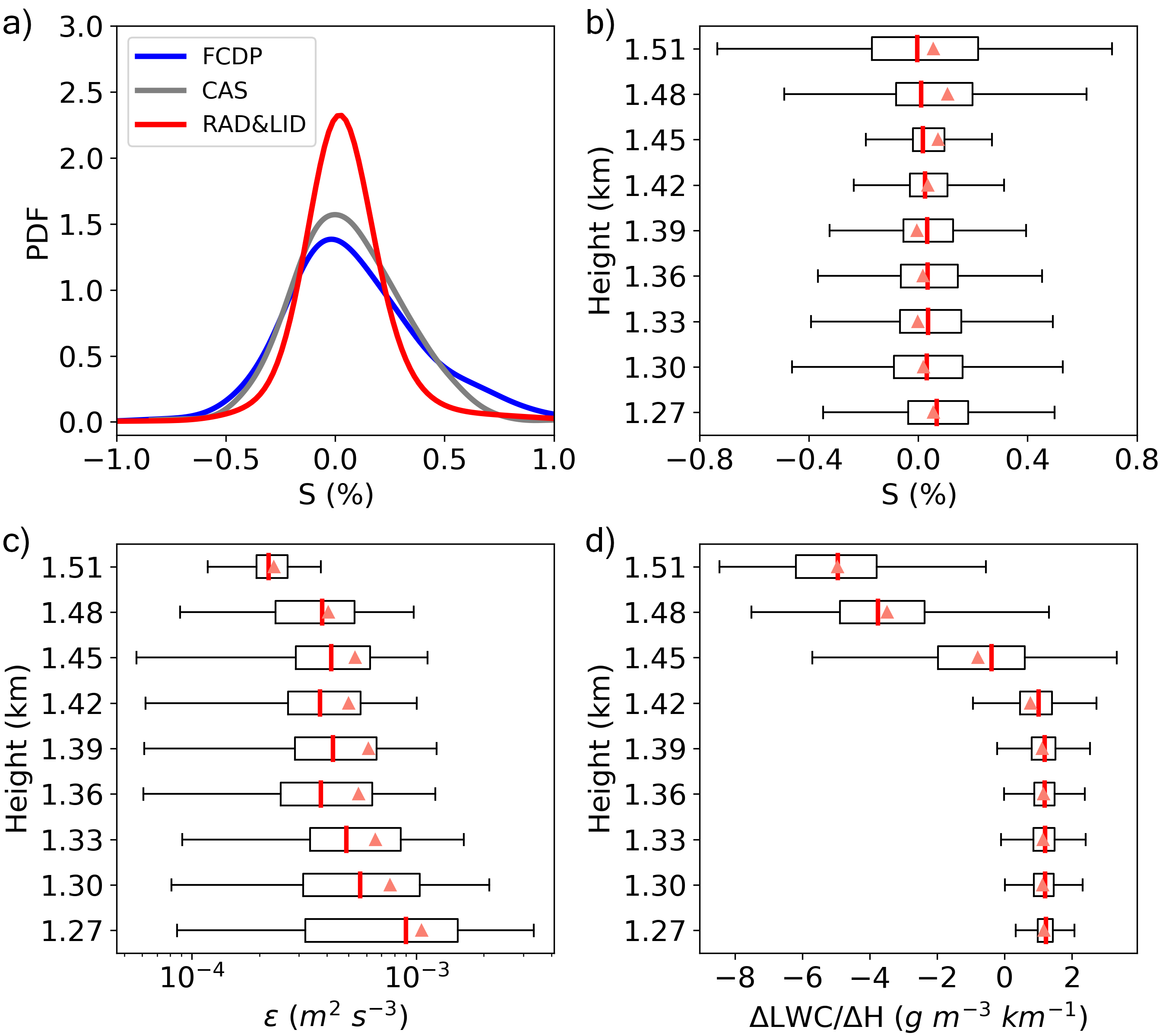A method to estimate in-cloud supersaturation fluctuations via ground-based remote sensing
Submitter
Yang, Fan — Brookhaven National Laboratory
Vogelmann, Andrew M. — Brookhaven National Laboratory
Area of research
Cloud Processes
Journal Reference
Science
The supersaturation of water vapor in atmospheric clouds, which is crucial for the formation and growth of cloud droplets and drizzle, is poorly known and rarely measured. We develop a new approach that can estimate profiles of supersaturation fluctuations in stratocumulus cloud using ground-based remote-sensing measurements.
Impact
The previous method to estimate in-cloud supersaturation relies on aircraft in situ measurements, for which the temporal and spatial limitations of short-term flights hinder obtaining the statistics needed to explore the influence of supersaturation variations on cloud droplet and drizzle formation. Our method opens new avenues for study by enabling statistical analyses of supersaturation profiles in stratocumulus clouds for various meteorological conditions obtained from multi-year, ground-based measurements.
Summary
Our new method to estimate in-cloud supersaturation profiles uses ground-based retrieved values of vertical velocity (w), liquid water content (LWC), and cloud droplet number concentration. The fundamental idea is that the difference in LWC between two cloud layers is the result of condensation or evaporation of cloud droplets; thus, the gradient of LWC together with w can be used to estimate the mean supersaturation between the two layers. Supersaturations estimated by this method agree reasonably well with values obtained from aircraft in situ data for a stable, non-drizzling stratocumulus cloud observed during ARM's Aerosol and Cloud Experiments in the Eastern North Atlantic (ACE-ENA) Campaign. Cloud regions with relatively larger supersaturation fluctuations are found to be related to turbulence, entrainment, and mixing. Our method has three advantages over aircraft estimations: (1) it does not rely on the quasi-steady state assumption, which is assumed for in situ measurements but is questionable in clean or turbulent clouds; (2) it can provide a supersaturation profile, rather than just point values from in situ measurements; and (3) it enables building statistics of supersaturation in stratocumulus clouds for various meteorological conditions from multi-year ground-based measurements.


